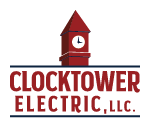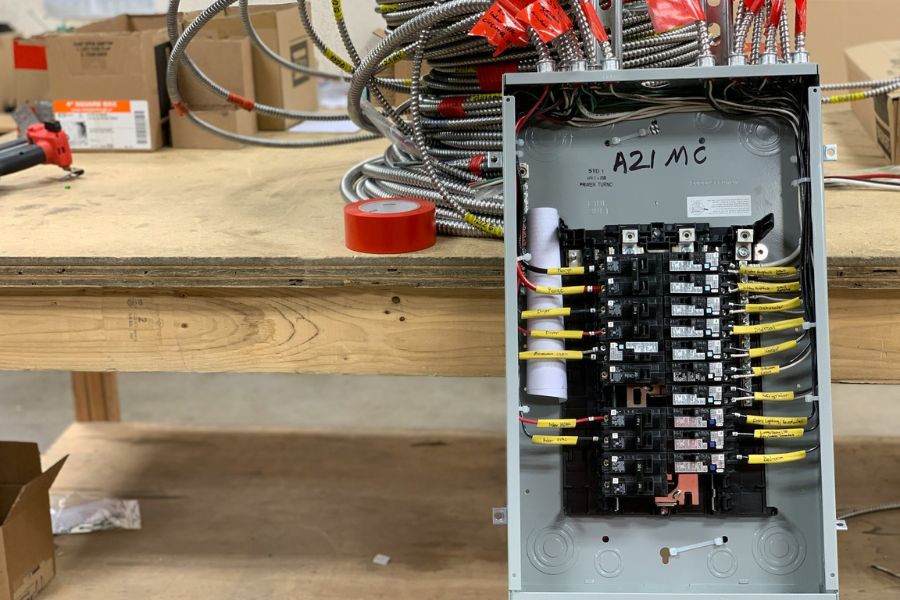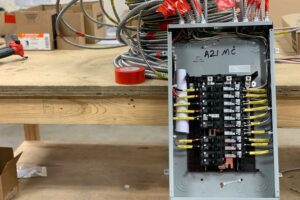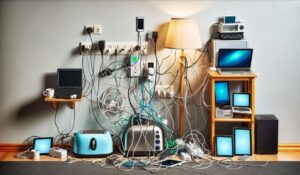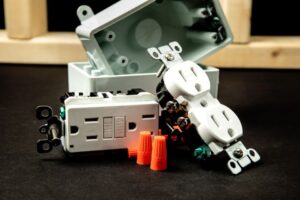One question homeowners often face when attempting to rectify electrical problems is whether or not they can replace their electrical panels themselves. Perhaps you’ve got an older home with and old panel, or you’ve recently discovered moisture in your electrical panel that is causing a problem.
Replacing an electrical panel yourself is possible, but it requires a solid understanding of electrical systems and safety procedures. For those with experience in electrical work, it can be a manageable DIY project, though it often involves obtaining permits and passing inspections.
Note that if you’re unsure or lack experience, it’s safer and more efficient to hire a licensed electrician to handle the replacement.
In this article, we’ll cover why replacing your home’s electrical panel should almost always be a job for a professional. We’ll discuss safety precautions, necessary permits, and when it’s best to call in a professional.
It’s expensive and risky to replace your electrical panel
Removing your existing breaker box and installing a new one is not like replacing a light switch or outlet; it involves operating with dangerous high voltage wiring. The consequences for doing it incorrectly can be dire.
- You must measure the new panel correctly and purchase one according to your home’s electricity consumption. Smaller than that and there won’t be room. Too large is unnecessarily cumbersome.
- The new panel should be fixed securely and safely at the right height and on the correct supports. That usually means drilling or knocking several big holes into walls.
- All of the existing circuit connections must be transferred onto the new panel and reconnected correctly.
- The main service wires from your meter should be removed and rewired to the new panel without disconnecting power to the entire house.
- The job requires specific adherence to local codes. As a home builder, you might not be updated on all the electrical codes.
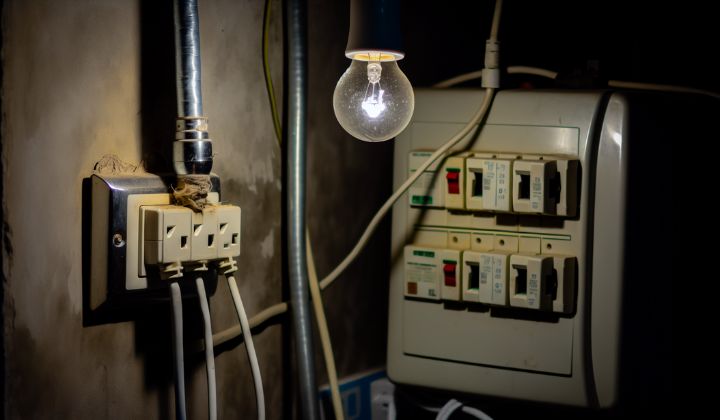
In the long run, going with an electrician is safer and less expensive
Though there are risks involved in old breaker boxes, replacing your home’s main electrical panel comes with its own set of risks. It really requires a professional electrician. Below are some good reasons to use a professional rather than try to do it yourself:
- It’s quicker – An expert electrician has changed a ton of panels. They know how to measure, purchase, and install a new one in a timely manner so that you’re not out of power for long.
- Safer – Electricians are highly trained and safe to work around high voltage electrical wires. They also have equipment and meters that they use to check for wires and connections.
- Easy inspection- A new panel cannot pass inspection if installed not per local code. Experts should do it right the first time.
- More liability coverage – If a uncertified DIYer is hurt or wrecks the home, insurance might not pay. As an electrician, you are protected by licensed and insured insurance.
- Cost-effective – Think about your own time as well as the potential of DIY error fixing. Often the amount is lower than a professional starting from scratch.
You probably wouldn’t try replacing your electrical service panel on your own, but this can be tricky. An experienced electrician ensures the work gets done quickly, properly and, above all, safely.
When to attempt a DIY panel repair
As we’ve discussed, we do not recommend changing your own relectical panel. However, in certain situations, it may be OK. Only attempt this DIY job if:
- You have electrical experience and training
- You have knowledge of local codes
- All main service plugs at the meter remain (you’re just replacing the interior panel)
- You will have the work certified and certified by the city/county
If you attempt this repair by yourself, be careful and get a professional involved if anything goes wrong.
Average cost to replace the electrical panel in your home
If you’re still wondering about cost, the DIY electrical panel replacement costs tend to be:
- Panel box: $100 to $400 depending on amps and slots
- Breakers: $5-$50 per circuit breaker
- Safety wear: $50- $200 for gloves, eyeglasses, tools.
- Other items: $50 to $100 for labels, connectors, hardware.
- Permit fee: $50- $100 depending on your area.
As you can see, adding all of this together isn’t generally going to be much cheaper than simply having an electrician do the electric panel upgrade.
Final thoughts
Rewiring or upgrading your own electrical panel comes with a lot of challenges and safety risks, so only take it on if you really know what you’re doing.
After weighing the pros, cons, steps, and risks, ask yourself: are you confident enough to handle this project, or is it better to hire a professional electrician?
We’re big believers in DIY repair jobs and saving money, but in general, panel replacement is not a place to try and cut costs. A bad job can cost you your home, your money, or even your safety. When it comes to electricity, experience, proper tools, and professional training are often the smartest choice.
